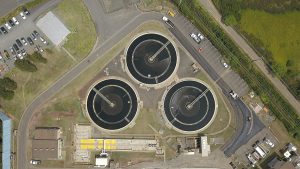
So this concept of doing wastewater surveillance for SARS-CoV-2 is gaining more and more traction. We posted recently about some work from MIT showing that wastewater titers of the virus are quite a bit higher than might be expected from the clinical data we have. I know some of the folks here at UC Davis are talking about setting up a wastewater surveillance team for this purpose. This paper “First confirmed detection of SARS-CoV-2 in untreated wastewater in Australia: A proof of concept for the wastewater surveillance of COVID-19 in the community” continues in that same vein, although they say their estimate is “in reasonable agreement” with the clinical data for the area. Abstract below:
Infection with SARS-CoV-2, the etiologic agent of the ongoing COVID-19 pandemic, is accompanied by the shedding of the virus in stool. Therefore, the quantification of SARS-CoV-2 in wastewater affords the ability to monitor the prevalence of infections among the population via wastewater-based epidemiology (WBE). In the current work, SARS-CoV-2 RNA was concentrated from wastewater in a catchment in Australia and viral RNA copies were enumerated using reverse transcriptase quantitative polymerase chain reaction (RT-qPCR) resulting in two positive detections within a six day period from the same wastewater treatment plant (WWTP). The estimated RNA copy numbers observed in the wastewater were then used to estimate the number of infected individuals in the catchment via Monte Carlo simulation. Given the uncertainty and variation in the input parameters, the model estimated a median range of 171 to 1090 infected persons in the catchment, which is in reasonable agreement with clinical observations. This work highlights the viability of WBE for monitoring infectious diseases, such as COVID-19, in communities. The work also draws attention to the need for further methodological and molecular assay validation for enveloped viruses in wastewater.

You may find my related post LinkedIn from April 1st of Interest.
https://www.linkedin.com/posts/m-siwicki-83549556_covid19-epiapp-deter-activity-6651242039646134272-Jef1